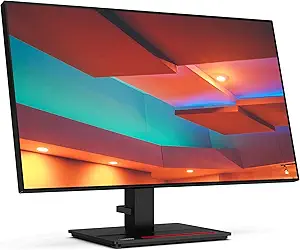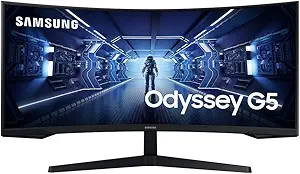In the ever-evolving landscape of monitor technology, Samsung and Lenovo emerge as formidable contenders, each offering a diverse range of displays tailored to meet the demands of modern users. From vibrant visual experiences to ergonomic designs, these brands strive to carve their niche in the market. In this comparative analysis, we delve into the key features, performance metrics, and user experiences provided by Samsung monitors and Lenovo monitors, aiding consumers in navigating the sea of choices.
Key Features Comparison
Size
When it comes to the aspect of size, both Samsung and Lenovo monitors offer a wide range of options to cater to different user needs. Samsung monitors range from compact 24-inch screens perfect for small desks and tight spaces, to large 49-inch ultra-wide screens designed for immersive gaming and professional use. Samsung’s latest Odyssey G9 model, for example, boasts a massive 49-inch screen with a 32:9 aspect ratio, offering an unparalleled viewing experience. However, this size might be overwhelming for some users and may require a larger desk space. On the other hand, Lenovo monitors also offer a variety of sizes, ranging from 19.5 inches to 27 inches. Their latest model, the Lenovo ThinkVision T27h-20, offers a 27-inch screen with a 16:9 aspect ratio, which is ideal for multitasking and general use. While Lenovo does not offer ultra-wide or large screen options like Samsung, their monitors are more suited for users who prefer a more standard size monitor that can fit comfortably in most workspaces. The smaller sizes of Lenovo monitors make them more portable and convenient for smaller workspaces, but they may not provide the same level of immersion as larger Samsung monitors.
Response Time
Samsung monitors are known for their low response times, particularly in their gaming-focused models. For instance, the Samsung Odyssey G7 boasts a 1ms response time, which is currently the fastest available in the market. This quick response time allows for smooth, lag-free gaming and video playback, making it a favorite among gamers and professionals alike. Samsung also uses Quantum Dot technology in their monitors which, while not directly affecting response time, does enhance the overall visual experience by providing more vibrant colors and sharper contrasts. On the other hand, Lenovo monitors, while offering competitive response times, tend to focus more on providing a balanced performance. The Lenovo Legion Y27gq-20, for example, offers a response time of 0.5ms, which is faster than Samsung's offering. However, some users have reported ghosting issues at such low response times, which can affect the overall visual experience. Lenovo monitors also come with ThinkColor technology, which provides professional-grade color accuracy and consistency. While Lenovo's response times are impressive, the brand is more known for its reliability and balanced performance rather than pushing the limits in any one particular aspect.
Panel Type
Samsung monitors typically utilize VA (Vertical Alignment) and IPS (In-Plane Switching) panel types. Samsung's VA panels are known for their superior contrast ratios and color accuracy, which make them ideal for multimedia use and gaming. They also have Quantum Dot technology, which enhances color accuracy even further. However, the viewing angles are not as wide as those of IPS panels, which might be a drawback for some users. On the other hand, Samsung's IPS panels offer wide viewing angles and consistent, accurate colors, but their contrast ratios are not as high as those of VA panels. Lenovo monitors, on the other hand, predominantly use IPS and TN (Twisted Nematic) panels. Lenovo's IPS panels are renowned for their wide viewing angles and excellent color accuracy, making them ideal for professional graphic design and video editing. However, they don't offer the same high contrast ratios as VA panels, which can make dark scenes in videos or games appear washed out. Lenovo's TN panels offer fast response times, which is beneficial for gaming, but they suffer from poor viewing angles and color reproduction. Compared to Samsung, Lenovo doesn't have a proprietary technology like Quantum Dot to enhance color accuracy. However, some of their high-end monitors feature color calibration tools for professional use.
Affordability
Samsung monitors are generally priced higher than Lenovo monitors, but they often justify this with advanced features and superior display quality. Samsung's latest monitors, such as the Odyssey G9 series, come with advanced technologies like Quantum Dot (QLED) technology, High Dynamic Range (HDR10+), and a 240Hz refresh rate. These features provide a high-quality viewing experience, but they also contribute to the higher price point. However, Samsung does offer a range of monitors at different price points, so there are more affordable options available. On the other hand, Lenovo monitors are typically more budget-friendly, making them a popular choice for those who need a reliable monitor without breaking the bank. Lenovo's latest monitors, such as the ThinkVision series, offer solid performance and good features like IPS panels and ergonomic designs. While they may not have the cutting-edge display technology found in high-end Samsung monitors, they offer excellent value for money. It's also worth noting that Lenovo often has sales and discounts, making their monitors even more affordable. Both brands have their strengths and weaknesses when it comes to price, and the best choice depends on the individual's needs and budget.
Reputation
Samsung and Lenovo are two well-established brands in the monitor market, each with a strong reputation for delivering high-quality products. Samsung, a Korean electronics giant, is known for its innovation and use of cutting-edge technology in its monitors. The brand has a strong reputation for producing monitors with excellent image quality, high resolution, and sleek designs. Their latest models, like the Samsung Odyssey G9, have been praised for their QLED technology, 240Hz refresh rate, and HDR1000 for an immersive gaming experience. However, they are often criticized for their high price point compared to other brands. On the other hand, Lenovo, a Chinese multinational technology company, is recognized for its reliability and value for money. Their monitors are known for their robust build quality, energy efficiency, and practical features suitable for both home and office use. The Lenovo ThinkVision P27h, for example, offers QHD resolution, USB-C connectivity, and an ergonomic stand at a competitive price. However, Lenovo monitors often lack the advanced features and superior image quality found in Samsung models. Despite this, Lenovo's reputation for customer service and warranty support is generally considered superior to Samsung's. Both brands have their strengths and weaknesses, and the choice between them often comes down to the specific needs and budget of the user.
Picture Quality
Samsung and Lenovo are two renowned brands in the monitor market, both offering a range of models with varying picture quality. Samsung monitors are known for their Quantum Dot technology, which enhances the color spectrum to produce more vibrant and lifelike images. Samsung's QLED monitors, for instance, offer a wider color gamut, higher contrast ratio, and better brightness levels compared to traditional LED monitors. However, they can be more expensive than other monitors with similar specifications. On the other hand, Lenovo monitors often feature In-Plane Switching (IPS) technology, which provides wide viewing angles and good color accuracy. Lenovo's ThinkVision series is particularly known for its excellent picture quality, with some models offering 4K resolution and 99% sRGB color gamut. However, compared to Samsung, Lenovo monitors might not offer the same level of contrast and vibrancy, particularly in their lower-end models. Both brands offer monitors with excellent picture quality, but the choice between them may depend on the specific requirements of the user, such as color accuracy for professional graphic design or contrast and brightness for gaming.
Production Selection
Samsung and Lenovo are both renowned brands in the monitor market, offering a wide range of products to cater to various user needs. Samsung monitors are known for their innovative technology, including Quantum Dot and Super Ultra-Wide Screen. The Quantum Dot technology provides more vibrant colors and sharper contrasts, making it ideal for graphic designers and gamers. The Super Ultra-Wide Screen, on the other hand, offers a more immersive viewing experience. Samsung's product selection ranges from basic monitors for everyday use to high-end models for professional use, making it a versatile brand. Lenovo, on the other hand, offers a more focused product selection, mainly targeting business and home office users. Their monitors are known for their ergonomic design and energy efficiency. They also offer models with ThinkVision technology, which delivers clear, crisp images, making it suitable for tasks that require high attention to detail. Lenovo's monitors also come with adjustable stands and eye comfort technology for a more comfortable viewing experience. However, compared to Samsung, Lenovo has fewer options for high-end monitors, making it less suitable for users seeking advanced features. Both brands have their strengths and cater to different segments of the market, making the choice dependent on the specific needs and preferences of the user.
Related Video
Conclusion
Samsung and Lenovo are two leading brands that offer a wide range of monitors with varying features and technologies. Samsung monitors are known for their superior display quality, featuring Quantum Dot technology that offers a wider range of colors and sharper contrasts. They are also equipped with the latest HDR10+ technology for a more immersive viewing experience. On the downside, Samsung monitors are generally more expensive, which may not appeal to budget-conscious consumers. On the other hand, Lenovo monitors are praised for their excellent build quality and ergonomic design. They offer a good balance between performance and price, making them a popular choice for both home and office use. Lenovo monitors also come with innovative features such as the ThinkVision technology, which reduces blue light emission to minimize eye strain. However, they may not match the superior display quality of Samsung monitors. Compared to other brands, both Samsung and Lenovo monitors offer competitive features and technologies, but the choice between the two would largely depend on the specific needs and budget of the user.



















